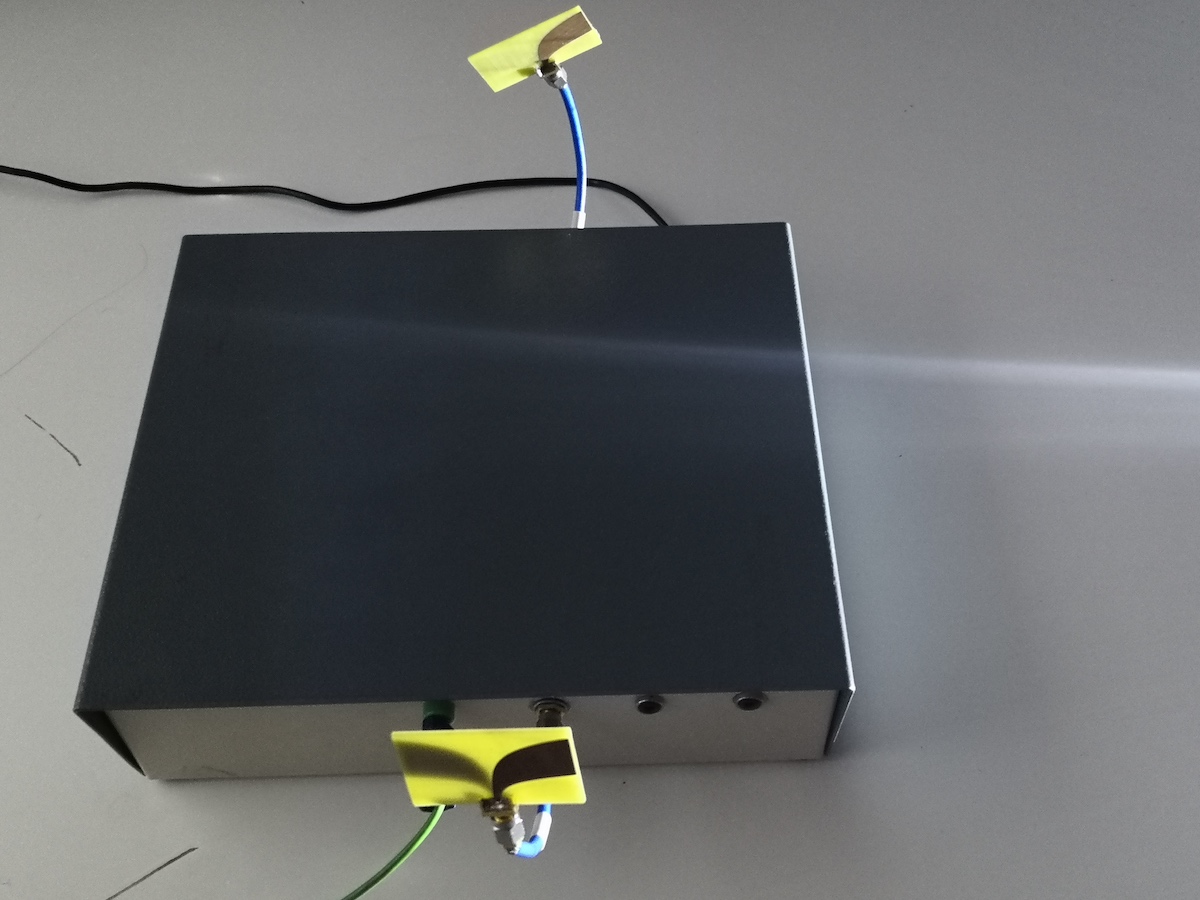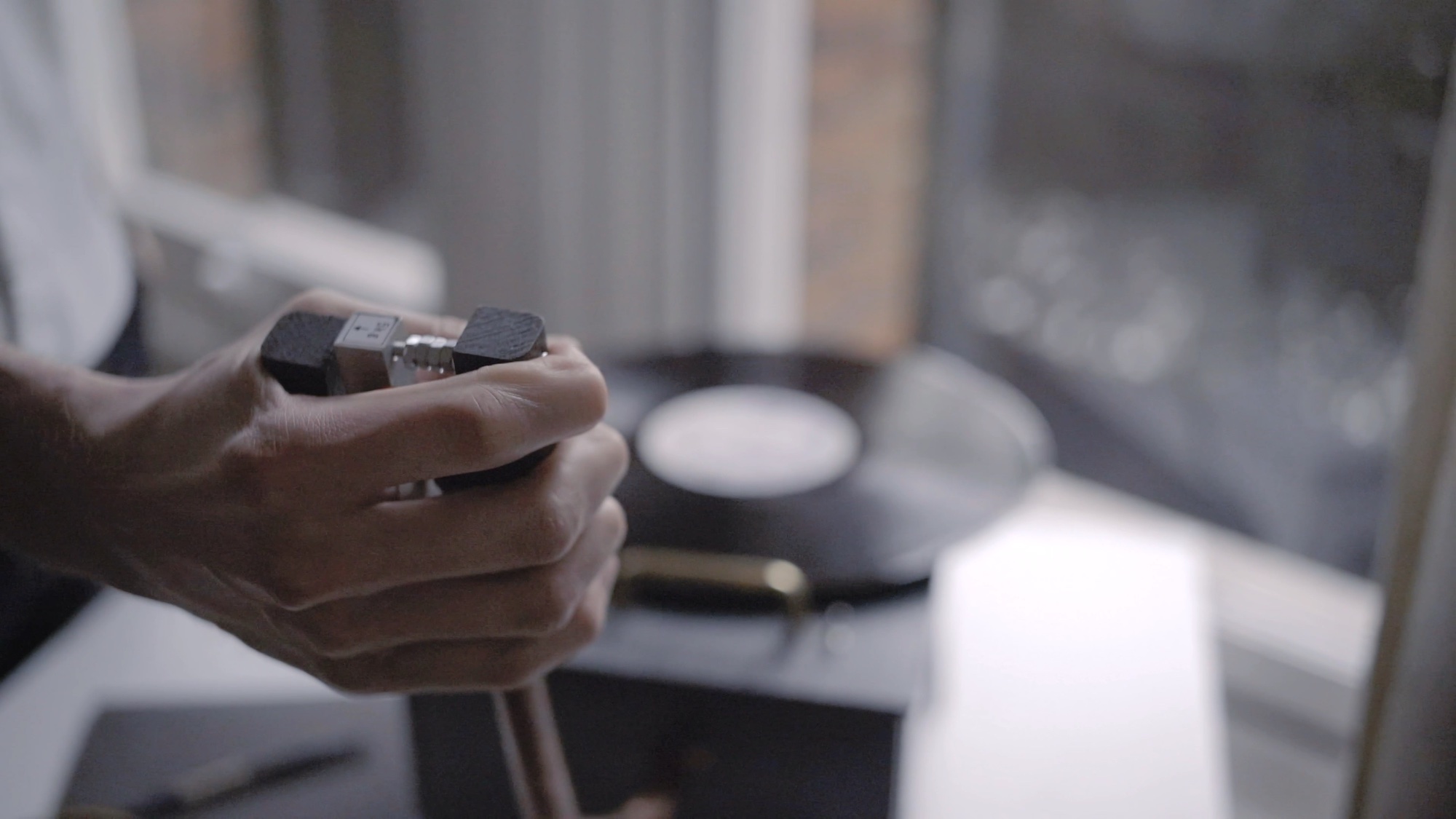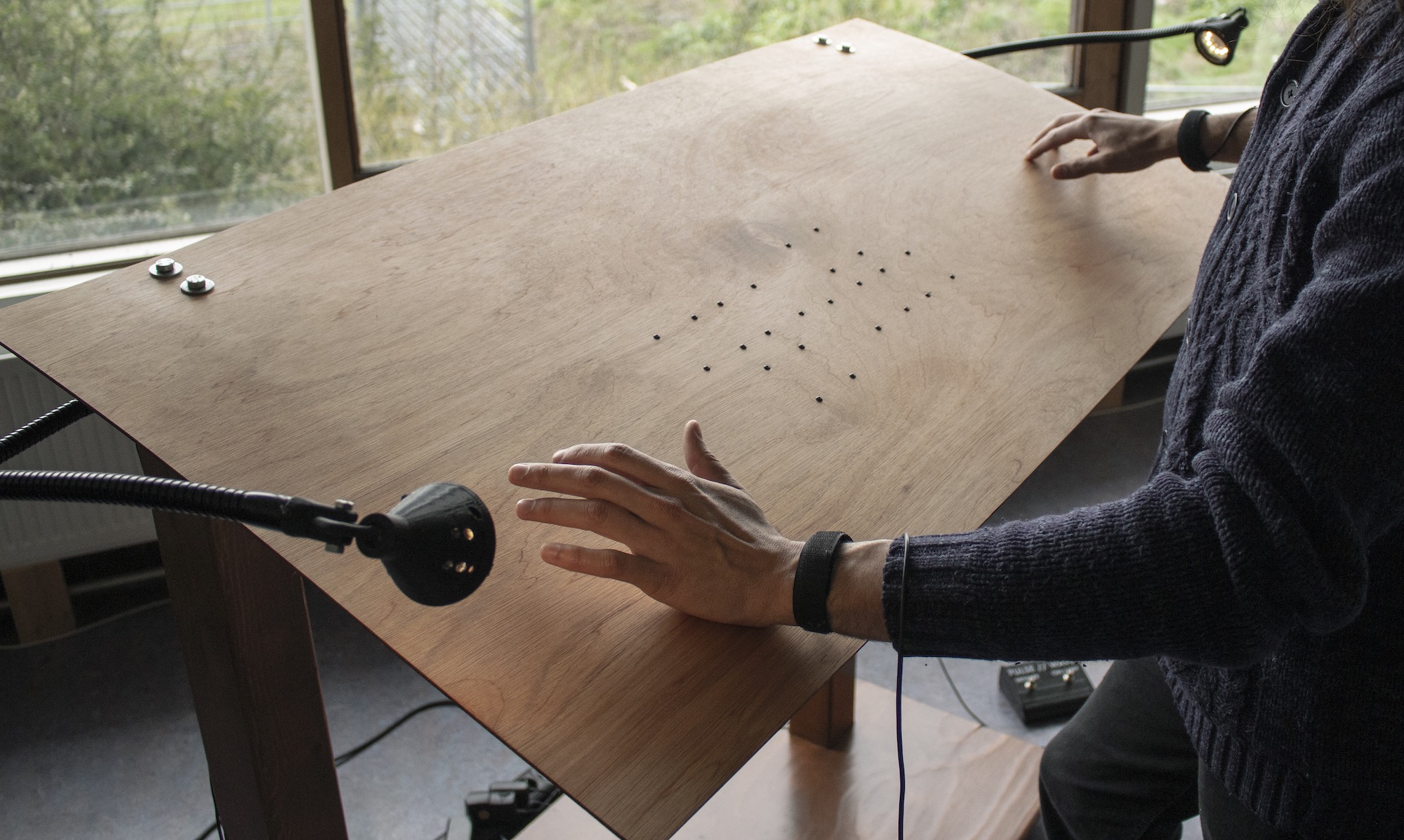Rebus
An instrument for electromagnetic interaction
Rebus is an in-air instrument created by Eleonora Oreggia (xname) and Clive Parini which uses a sensitive electromagnetic emitter and receiver to capture detailed movements of the hands.
Electromagnetic interaction
Rebus is a self-contained portable musical instrument and interactive system that can be played without being touched. Rebus recalls the spirit of the 100-year old Theremin, but it uses a completely different sensing technique: one antenna transmits an electromagnetic signal generated by a synthesiser, the other detects it. The sensing system uses microwave technology to detect both phase and power of an emitted and received electromagnetic wave, allowing interaction with the instrument, whether from performer or audience, to be sensed in new and interesting ways.

Rebus at EMS Stockholm
Creating a sensitive space
The signal becomes like a chord that can be manipulated with the hands and the body, creating an interference between emitter and receiver. The detected signal information is passed to Bela where it is mapped and processed to suit a variety of different composition styles and types of control.

Close up of the instrument.
Immaterial interfaces
The instrument uses state of the art electromagnetic technology and a particular microwave frequency suitable to capture any small movement or oscillation of the hands, making it extremely sensitive and reactive while being completely independent of the light or sound condition of the room it is played in. This also means that there is no need to recalibrate the instrument in different spaces. Rebus outputs a stereo audio signal alongside CV outputs and it also features stereo input so it can be used as a live effects box. It can be plugged and played and is intuitive to use. The exploration of its sonic potential has just started, please get in touch with the team if you would like to try it!
The creators

Eleonora Oreggia (xname) performing with Rebus.
The instrument was devised by Dr Eleonora Oreggia and Professor Clive Parini as part of a PhD in Media & Arts Technology at Queen Mary, University of London.




